Invasive Vines of Florida

Below is a list of several vines known to be invasive, or predicted to become invasive, and some tips for removing them. This list is by no means comprehensive but it does cover a number of the most commonly encountered species.
Follow the links to learn more about each plant on Gardening Solutions and the UF/IFAS Assessment. For an in-depth look at different control strategies, please see our article, Removing Problematic Vines.
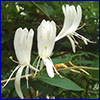
Japanese Honeysuckle (Prohibited) – Imported years ago from Asia for use as an ornamental, Japanese honeysuckle quickly spread into the wild, and is considered invasive. In fact, it’s now banned in several states, including Florida. Control this species mechanically, culturally, or chemically. Consider replacing it with coral honeysuckle, a Florida native honeysuckle.
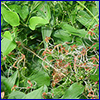
Sweet Autumn Clematis (High Invasion Risk) – Sweet autumn clematis is a vigorous vine that’s been planted in the South for years. Despite its attractive qualities, sweet autumn clematis has some drawbacks, namely that it’s predicted to become invasive. Control this species mechanically, culturally, or chemically and consider replacing it with a native alternative like Clematis virginiana.
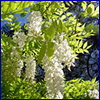
Chinese and Japanese Wisteria (Invasive, and High Invasion Risk)– Asian wisteria are beautiful but both species grow so aggressively that they quickly cover other plants, shading out and even killing trees. Mechanical and chemical control methods are effective. You can also remove the entire plant by digging up the roots. Any root pieces left in the ground may resprout, so be on the lookout for wisteria growing back. Consider replacing with America’s native wisteria, Wisteria frutescens.
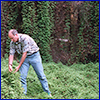
Old World Climbing Fern (Prohibited)– Don’t be fooled by this species’ delicate leaves. If you find Old World climbing fern on your own property, be sure to remove it quickly, paying special attention to the roots. If mechanical controls fail, consider chemical controls. A biological control exists for this species: a defoliating moth, Neomusotima conspurcatalis, was released in 2008 and 2009, and has had some success. Other insects are currently being tested for biological control.
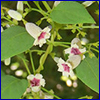
Skunkvine (Prohibited) – Native to east and southeast Asia, skunk vine is a weed that has haunted Florida since the 1800s. It is most common in west-central Florida: Hillsborough, Hernando, Pasco, Citrus, Marion, Sumter, Lake, Orange, and Polk counties. Control mechanically, culturally, or chemically. Cut stems often regrow from root and stump tissue. Flowers appear in the summer or fall, so control skunk vine early in the season to avoid fruit set.
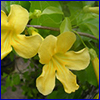
Cat’s Claw (Prohibited) – Cat’s claw flowers are so pretty that some gardeners tolerate this aggressive vine, and learn to regret it! To remove, control the vines mechanically and dig up the underground tubers. The plant moves to new areas via the winged seeds it produces in flat, bean-like seed pods. Cat’s claw begins to bloom in early- to mid-April; attempt to remove mature vines before they have a chance to set seed. Be on the lookout for sprouts from wind-blown seeds each spring.
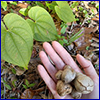
Air Potato (Prohibited) – Stems of this vine can quickly grow to 60 feet in length, making air potato a difficult vine to control. If attempting to control air potato vines mechanically, pay special attention to underground and areal bulbils, or “potatoes.” Bulbils are round and light brown, with small nubs on them. These drop to the ground and grow into new plants rapidly. A biological control exists for this species: in 2012, air potato leaf beetles were released in Florida.

Flame Vine (High Invasion Risk) – Pyrostegia venusta is a flowering woody vine native to South America. This fast-growing vine sets this landscape ablaze with clusters of orange, 3-inch long tubular flowers that attract hummingbirds. Using its tendrils to climb, flame vine is known to choke trees over which it’s been allowed to grow. Conscientious gardeners with flame vine in their landscapes should take note and control their vine’s growth to prevent it from escaping the confines of their yard.

Kudzu (Prohibited) – Last but certainly not least, the most famous invasive vine of all — kudzu. Control through mechanical methods, cutting back young colonies of kudzu repeatedly during the hottest days of summer. Older colonies of kudzu are harder to control and take years to completely eradicate. Multidirectional leaves can make chemical control difficult and repeated applications are often necessary. Prevent reestablishment of kudzu in a cleared area by replanting with more desirable, non-invasive plants after treatment.
For more information about controlling pest plants, visit the University of Florida IPM website. If you have questions about an invasive species, please contact your county Extension office. Finally, contact the UF/IFAS Pesticide Information Office for more information about herbicide safety.
Also on Gardening Solutions
More from UF/IFAS
- Controlling Invasive Plants in North Florida Forests–EDIS
- UF/IFAS Assessment of Non-native Plants in Florida’s Natural Areas
- Wendy’s Wanderings: Vexing Vines–Florida Master Gardener Volunteer Program
